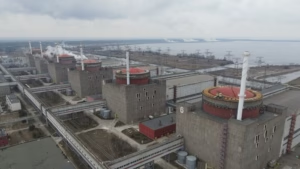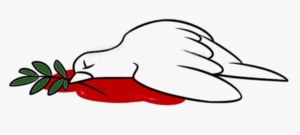Statistics South Africa announced a troubling rise in the official unemployment rate, which climbed to 33.5% in the second quarter of 2024, up from 32.9% in the first quarter of the year.
Zanele Sabela, spokesperson for the Congress of South African Trade Unions (Cosatu), described the latest unemployment figures as a stark wake-up call for the nation. The labour federation expressed alarm at the worsening employment crisis, urging immediate and decisive action.
Cosatu emphasized that the country cannot afford to normalize a situation where four out of every ten South Africans, and six out of every ten young people, are unable to secure employment. The federation warned of severe consequences if this trend continues.
“This is our greatest national crisis, and it is time the government and the private sector respond to it with the same decisiveness as we did for Covid-19. The dangers of meandering along this path are tantamount to playing Russian roulette with a live grenade,”
Cosatu warned.
With the government preparing to table the Medium-Term Budget Policy Statement (MTBPS) in Parliament in October, Cosatu stressed that addressing the unemployment crisis should be treated with the utmost urgency.
“We need an MTBPS that will boldly declare war on unemployment and kickstart a painfully weak economy,”
the federation stated.
Cosatu also pointed out that more collaborative efforts are required from government, business, labour, and civil society to revive industrial master plans, promote a robust “buy local” campaign, and overhaul the skills training system to ensure it meets the needs of the current and future economy.
Lagging Effects of Load Shedding on Employment
Cobus de Bruyn, Head of Client Value Propositions for Agriculture at Nedbank Commercial Banking, explained that the recent improvements in the country’s energy situation have not yet translated into job creation. Despite the progress made in stabilizing electricity supply, unemployment continues to rise due to the delayed impact of the previous load shedding crisis.
“There will be a significant lag effect post-load shedding (as regards jobs), which is what we’re seeing now. Load shedding resulted in low economic growth and alternative energy solutions increased operating expenses while solving for energy. When conditions improve, a lag effect is a reality, and it takes time for businesses to recover before they can grow,”
De Bruyn noted.
He highlighted that while Eskom now has the capacity to supply sufficient electricity, the associated increase in energy costs is placing a strain on many businesses, forcing some to reduce their workforce as a cost-cutting measure.
Focusing on the agricultural sector, De Bruyn remarked that rising unemployment also means fewer people can afford basic necessities like food. Nedbank pointed out that although it was concerning that 45,000 jobs were lost in the agricultural sector (up from 21,000 in the first quarter), the sector’s reliance on seasonal and unskilled labour meant that employment levels tend to fluctuate from quarter to quarter.
Economic Analysts Surprised by Unemployment Surge
For many analysts and members of the public, the sharp rise in unemployment came as a surprise. Dr. Chris Harmse, consulting economist at Sequoia Capital Management, noted that the consensus among financial market experts had been for a decrease in the unemployment rate to 23.7%. Instead, the latest figures revealed that 158,000 more South Africans were unemployed in the second quarter than in the first quarter. The formal sector alone saw 92,000 job losses during this period.
Harmse also pointed out that the broad definition of unemployment, which includes people who are not only unemployed but also discouraged from seeking work, showed that 11.579 million people, or 46% of the labour force, were without jobs—a significant increase from 45.1% in the previous quarter.
According to Harmse, this rise in unemployment should not have come as a complete surprise given the sluggish performance of the South African economy. The economy grew by a mere 0.3% in the fourth quarter of 2023 and by only 0.1% in the first quarter of 2024, which was insufficient to accommodate the new entrants into the job market. He pointed out that many of the 200,000 matriculants from 2023 who did not pursue further education or training were unable to find employment, leading to widespread discouragement.
The Broader Economic Context: Manufacturing and Retail Struggles
In addition to the unemployment crisis, other sectors of the South African economy have also been struggling. Manufacturing production fell by 5.2% year-on-year in June 2024, following a 1.2% decline in May. This marked the second consecutive month of contraction in the manufacturing sector, signaling ongoing difficulties.
Retail sales also saw sluggish growth, expanding by just 0.8% in May—the start of the second quarter—with expectations of continued weak performance for the remainder of the quarter.
Harmse noted that the rise in unemployment was not unique to South Africa, with many countries around the world experiencing similar trends.
For example, the United States saw its unemployment rate increase from 3.7% at the beginning of the second quarter to 4.3% in July. Meanwhile, India’s rural unemployment rate surged from 6.3% in May to 9.3% in June.
Government’s Role in Tackling Unemployment
Harmse emphasized that unemployment must be viewed as the government’s top priority, stating that the economy needs to grow to create jobs. He pointed out that during the period from 2000 to 2007, when South Africa’s economy grew by an average of more than 3%, the unemployment rate fell to around 20%.
“The economy must grow. During the period 2000 to 2007, when the South African economy on average grew by more than 3%, unemployment came down to levels around 20%,”
Harmse stated.
He advocated for public works programs aimed at infrastructure repairs, including roads, railways, and essential services such as water and electricity, which he argued should be implemented as quickly as possible. Harmse also suggested that the national budget prioritize these programs and that public debt be temporarily increased to around 75% of gross domestic product (GDP) to finance them.
Public-Private Partnerships (PPP), Harmse added, should form the foundation for delivering these projects to ensure transparency and accountability in tendering and implementation.
Additionally, he stressed the importance of addressing South Africa’s skills shortage by focusing on the training of teachers in critical areas such as mathematics, science, IT, and occupational subjects. Investment in school infrastructure, equipment, and support systems should also be prioritized. Harmse highlighted the need for policies that foster small business development and reduce the cost of doing business in South Africa.
| Sector | Statistics |
|---|---|
| Overall Unemployment Rate (Q1) | 32.9% |
| Overall Unemployment Rate (Q2) | 33.5% |
| Job Losses (Formal Sector) | 92,000 |
| Job Losses (Agriculture) | 45,000 |
| Manufacturing Production Decline (May 2024) | -1.2% |
| Manufacturing Production Decline (June 2024) | -5.2% |
| Retail Sales Growth (May 2024) | 0.8% |
| Broad Unemployment Rate (Q1) | 45.1% |
| Broad Unemployment Rate (Q2) | 46% |
| US Unemployment Rate (Q2 Start) | 3.7% |
| US Unemployment Rate (July) | 4.3% |
| Indian Rural Unemployment Rate (May) | 6.3% |
| Indian Rural Unemployment Rate (June) | 9.3% |

















